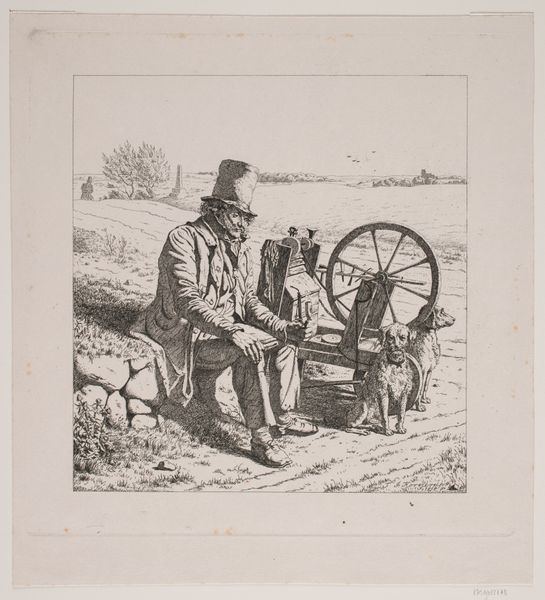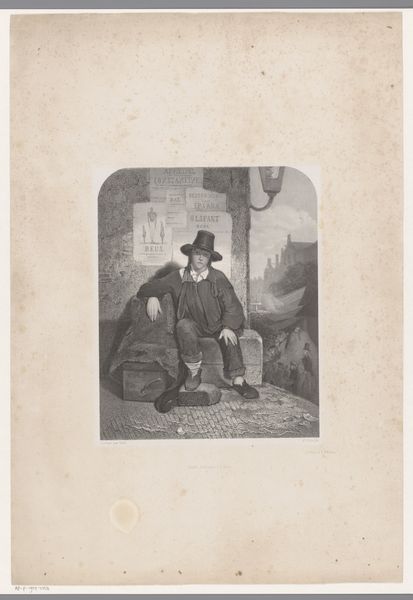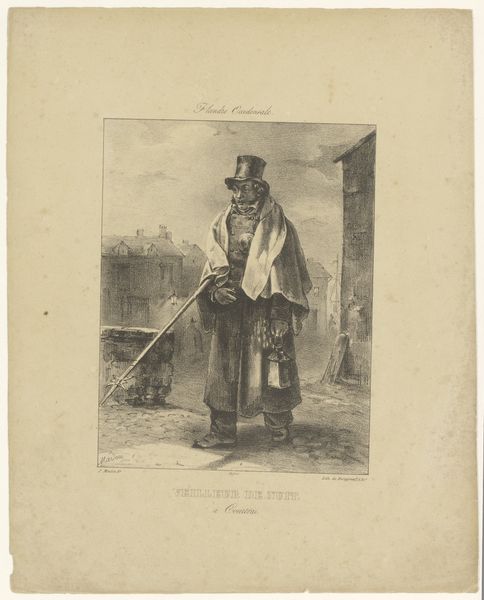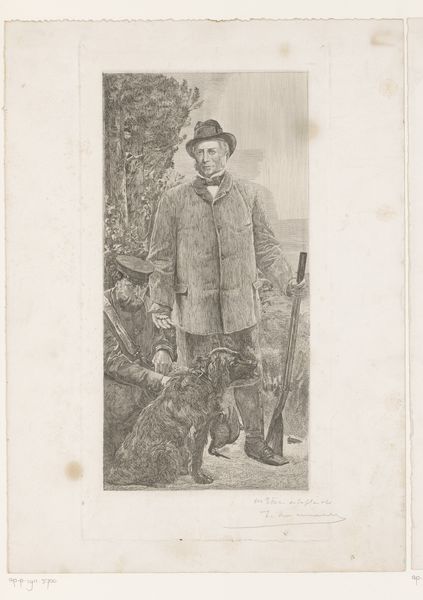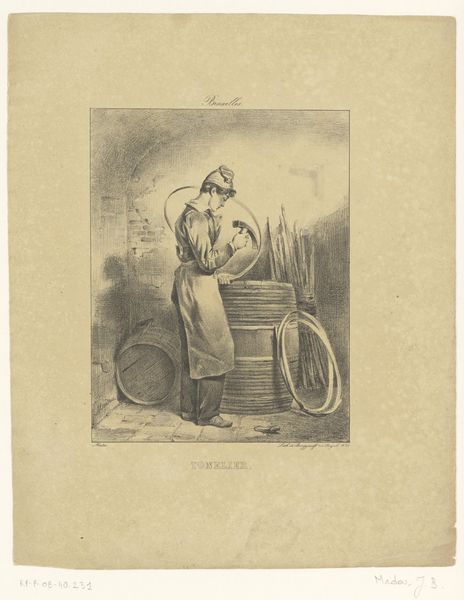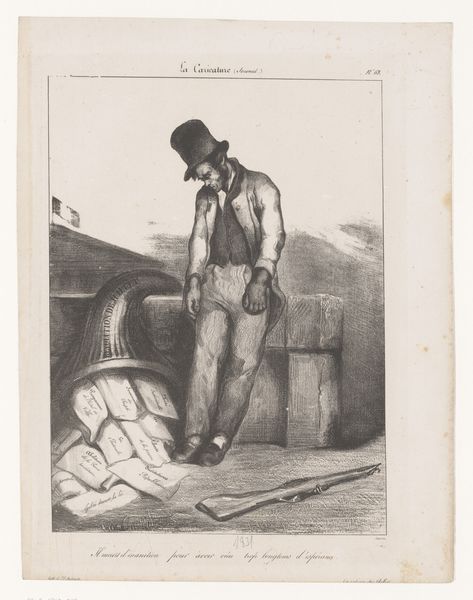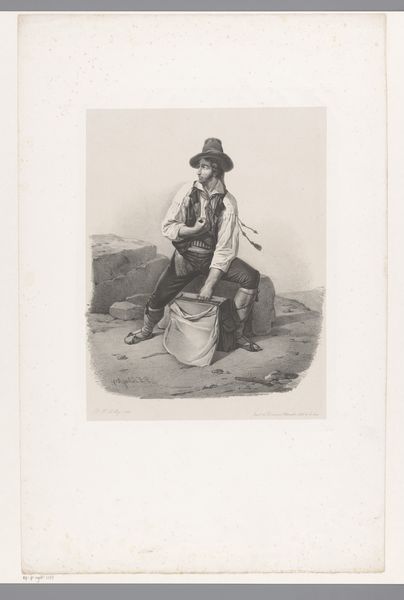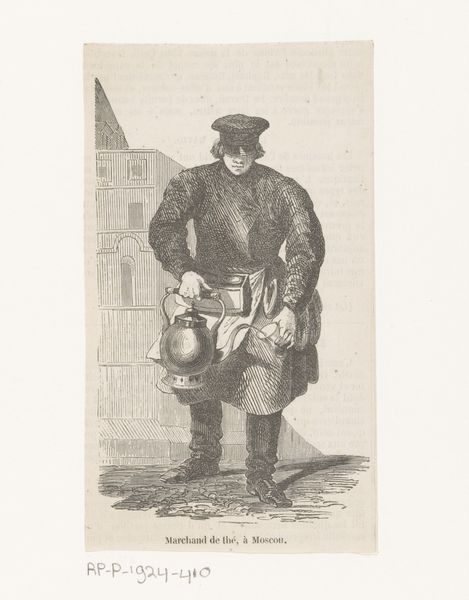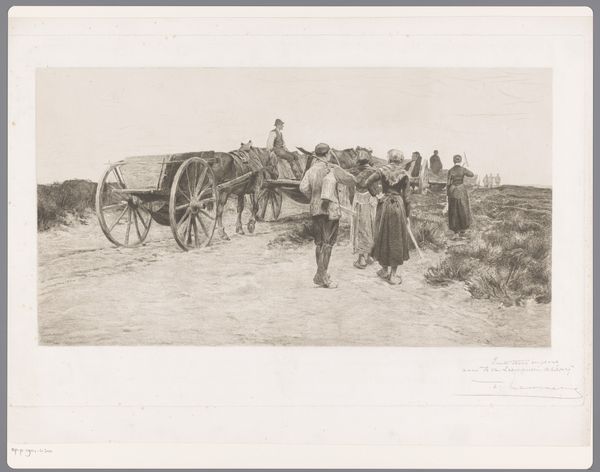
drawing, pencil
#
portrait
#
drawing
#
landscape
#
charcoal drawing
#
pencil drawing
#
pencil
#
genre-painting
#
realism
Dimensions: height 264 mm, width 347 mm
Copyright: Rijks Museum: Open Domain
Curator: Let's take a closer look at L.F.H. Andrau's "Rokende visser met kruiwagen," created around 1864, using pencil and charcoal. What strikes you immediately? Editor: The monochrome palette lends a certain melancholy to the scene. The textures – the brickwork, the woven net, even the man’s clothes – look realistically rough, tactile. It's all rendered with such detail despite the limited media. Curator: Absolutely. Andrau’s choice of subject is important here, reflecting the social realism movement that was gaining momentum. The fisherman is a working-class figure, given a prominence not often seen in earlier portraiture. What might his pose suggest? Editor: There’s a weariness about him. The wheelbarrow hints at manual labour; the tools, the fishing net...all things physically crafted and laborious. The smoke is his momentary escape, a small act of self-care carved from relentless work. Curator: Exactly. Think about the fishing industry at the time – the exploitative practices, the precariousness of life, particularly for those on the margins of society. This isn't just a genre painting. It’s a commentary on labor and class. Consider how identity is linked to labour and to accessing basic needs. Editor: It's interesting to think about how the physical effort translates into social and economic realities. The fisherman is a key participant in his trade and in the cycle of material exchange. He provides something, so he can acquire something in return. Curator: Right. And consider, too, the implied narrative. Where has he come from, what lies ahead? Is he successful today, or is this image a marker of systemic failure? The man becomes an allegorical representation of wider social and economic inequities. Editor: It invites consideration on where his catch goes, who gets access and for what price. And it shows how crucial his labor is for an effective economy. Curator: Looking at it through a materialist lens provides insight, adding texture to broader interpretations. The artist chose to depict someone often unseen and unheard, placing him in the center. I found I had new perspectives today by focusing on material and labor in a historical, feminist way. Editor: It definitely enhances a richer understanding of this captivating scene. It is also powerful to imagine the artwork from the material angle, especially because it relates to all levels of labor and consumption, extending all the way to the present day.
Comments
No comments
Be the first to comment and join the conversation on the ultimate creative platform.
